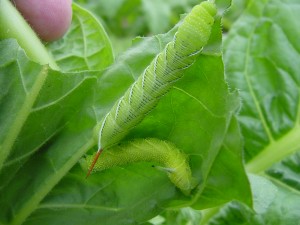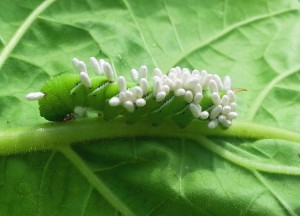Scouting for Tobacco Hornworms
go.ncsu.edu/readext?307124
en Español / em Português
El inglés es el idioma de control de esta página. En la medida en que haya algún conflicto entre la traducción al inglés y la traducción, el inglés prevalece.
Al hacer clic en el enlace de traducción se activa un servicio de traducción gratuito para convertir la página al español. Al igual que con cualquier traducción por Internet, la conversión no es sensible al contexto y puede que no traduzca el texto en su significado original. NC State Extension no garantiza la exactitud del texto traducido. Por favor, tenga en cuenta que algunas aplicaciones y/o servicios pueden no funcionar como se espera cuando se traducen.
Português
Inglês é o idioma de controle desta página. Na medida que haja algum conflito entre o texto original em Inglês e a tradução, o Inglês prevalece.
Ao clicar no link de tradução, um serviço gratuito de tradução será ativado para converter a página para o Português. Como em qualquer tradução pela internet, a conversão não é sensivel ao contexto e pode não ocorrer a tradução para o significado orginal. O serviço de Extensão da Carolina do Norte (NC State Extension) não garante a exatidão do texto traduzido. Por favor, observe que algumas funções ou serviços podem não funcionar como esperado após a tradução.
English
English is the controlling language of this page. To the extent there is any conflict between the English text and the translation, English controls.
Clicking on the translation link activates a free translation service to convert the page to Spanish. As with any Internet translation, the conversion is not context-sensitive and may not translate the text to its original meaning. NC State Extension does not guarantee the accuracy of the translated text. Please note that some applications and/or services may not function as expected when translated.
Collapse ▲Two species of hornworms may be present on tobacco plants, tomato and tobacco hormworms. These species are biologically similar and are managed in the same way.
Hornworm populations may occasionally develop prior to topping, but they are most common post topping in North Carolina.
What part of the plant to scout for tobacco hornworms
Hornworm eggs are round, pale green, and laid on the upper surface of tobacco leaves. Newly hatched larvae are small, appear blueish to pale green with a black horn, and may be on upper surfaces of leaves.

John C. French Sr., Retired, Universities:Auburn, GA, Clemson and U of MO, Bugwood.org
Creative Commons License licensed under a Creative Commons Attribution-Noncommercial 3.0 License.
Larger hornworm larvae feed within the upper 2/3 of plants, and are often found on the underside of the leaves.
How to scout for tobacco hornworms
Hornworms can cause substantial damage to a plant, which is often clearly noticeable. Feeding holes caused by larvae larvae are smooth on the edges and can be very large. Hornworm “frass” or droppings are distinctively barrel-shaped and also indicative of an infestation. Remember, however, that hornworm thresholds are based on insect counts, not damage!

Whitney Cranshaw, Colorado State University, Bugwood.org
Creative Commons License licensed under a Creative Commons Attribution 3.0 License.
Tobacco hornworm thresholds
The hornworm threshold is 1 or more healthy larva per 10 plants, or 10% infestation. Multiple hornworms may be present on a single plants. Five hornworms with parasitic wasp cocoons on their backs are equivalent to one healthy hornworm because they consume approximately 1/5 as much as a healthy, non parasitized larva.




